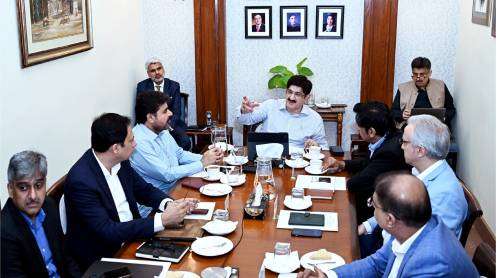The government is likely to review tariff of indigenous gas-based Captive Power Plants (CPPs) and allow new CPPs with cogeneration technology to get RLNG connections at notified tariff, sources close to Minister of State for Petroleum and Natural Resources told Business Recorder.
Sharing the details, sources said that based on the discussions in the meeting held on March 27, 2008 on the issue of “urgent measures for additional power generation” Petroleum Division was conveyed that the condition for self-use in respect of gas allocation reserved for captive power has been revoked and the CPPs will be allowed to sell surplus generation to the Discos or KESC (KE).
SSGCL and SNGPL will issue NOC to the respective CPPs. The decision was conveyed to both SSGCL and SNCPL for implementation pursuant to the decision to allow CPPs which had surplus power generation and had sought generation licence from NEPRA to sell excess generation to Discos.
Captive power plants: Power Div urged to initiate energy efficiency audit
As of July 2022, both SNGPL and SSGCL have reported certain CPPs who hold NOC/ permission for sale of surplus power to Discos.
Presently, total number of inactive consumers at SNGPL and SSGCL are 6 whereas 22 consumers are active of this 8 units are captive (export) while 10 units are captive (non-export). Only one is consuming RLNG over and above its indigenous gas load.
Contractual load of active consumers is 78.8 mmcfd (SNGPL 6.8 mmcfd and SSGCL 72 mmcfd). Current gas load is 32.2104 mmcfd (SNGPL 1.2104 mmcfd, SSGCL 31 mmcfd). Applicable tariff in SNGPL is $ 9/ mmbtu whereas in SSGCL gas rate is Rs 819 mmbtu for exports. However, rate of others is Rs 1054 mmbtu.
Section 3.1.6 of the National Gas Allocation and Management Policy, 2005 provides the following for gas supply to Captive Power sector:
Gas supply to all consumers in captive power sector will be made after first meeting the requirement of domestic, fertilizer, commercial, industrial, and power (both Wapda/ KESC) sectors on the following basis: (i) those dual fired power plants with a capacity of up to 50 MW, which employ combined cycle or cogeneration technology, shall be encouraged for allocation of gas. In order to ensure the optimal gas use for power generation, industrial units collectively setting up merchant power plants for self-consumption only will also be included in this category and ;(ii) gas supply for self-generation would be on “as and when available basis” at different locations.
Federal Cabinet while ratifying the decision of the CCoE meeting held on November 26, 2020 directed that no new gas connection may be allowed to industrial units solely for power generation through domestic gas or LNG where grid connectivity is available.
Government in the past has been taking measures for efficiency audit of the captive power plants on SSGCL and SNGPL network but the same could not be proceeded because of unwillingness of industry and protracted litigations.
Petroleum Division is of the considered view that the only way to discourage use of gas/ RLNG for self-use by CPPs is to rationalize the tariff structure so that CPPs can get electricity from grid and the gas so the rest can be used for other economic activities.
Considering the shortfall in the demand and supply of natural gas in the country and the availability of surplus power in the national grid, Petroleum Division has submitted the following proposals for consideration: (i) The earlier directive of March 27, 2008 asking SSGCL and SNGPL to issue NOC to CPPs for sale of surplus power to Discos may be revoked.
Moving forward both Sui companies would not issue such NOC to CPPs;(ii) new CPPs with cogeneration technology may be allowed to get RLNG connections at notified tariff which do not have power grid (distribution or transmission) connectivity;(iii) load enhancement of existing CPPs with cogeneration technology may only be allowed on RLNG and;(iv) the tariff for existing CPPs on indigenous gas supply would be revised as per policy of the government during the review of consumer gas prices from time to time.








